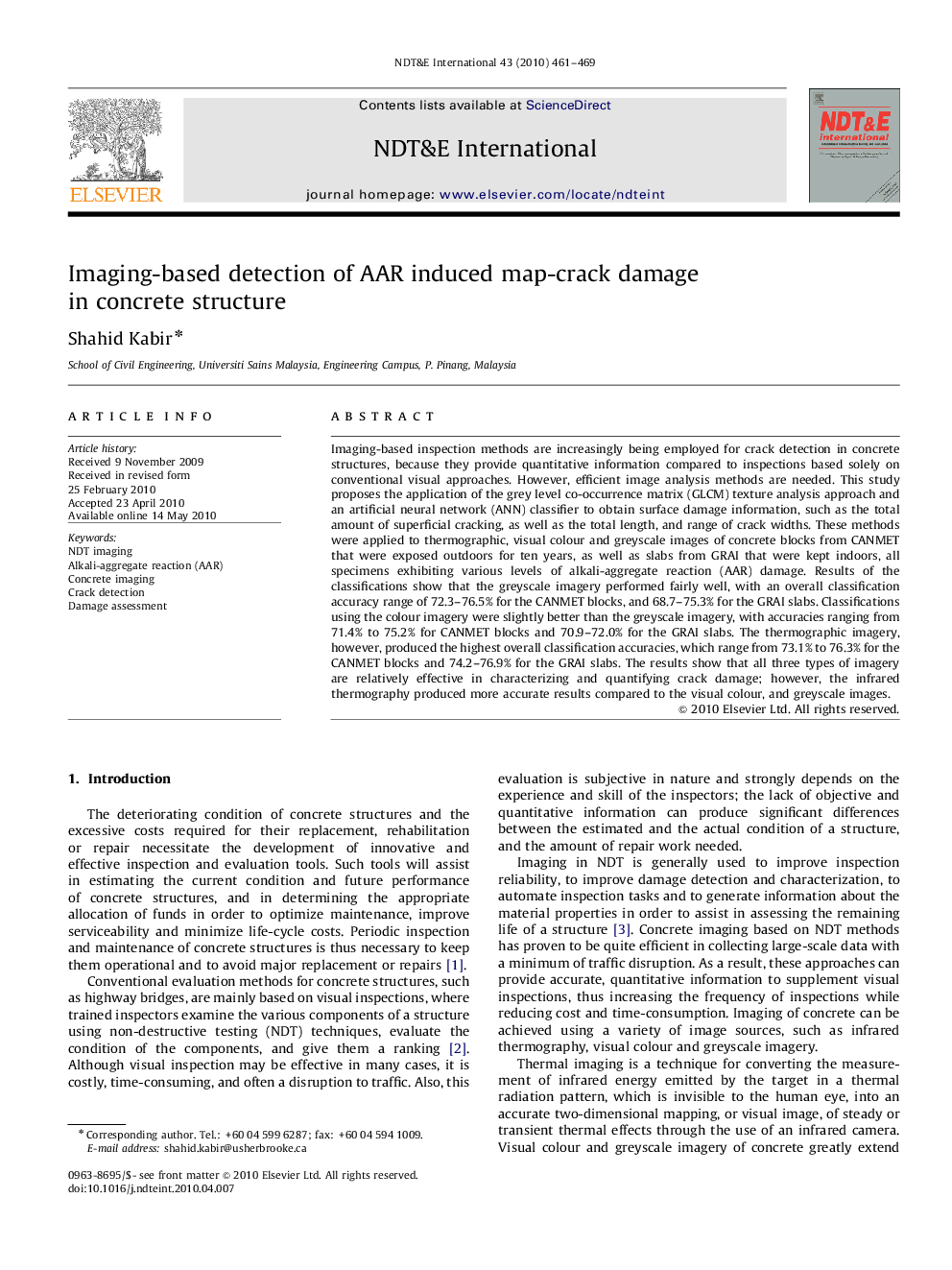| Article ID | Journal | Published Year | Pages | File Type |
|---|---|---|---|---|
| 295626 | NDT & E International | 2010 | 9 Pages |
Imaging-based inspection methods are increasingly being employed for crack detection in concrete structures, because they provide quantitative information compared to inspections based solely on conventional visual approaches. However, efficient image analysis methods are needed. This study proposes the application of the grey level co-occurrence matrix (GLCM) texture analysis approach and an artificial neural network (ANN) classifier to obtain surface damage information, such as the total amount of superficial cracking, as well as the total length, and range of crack widths. These methods were applied to thermographic, visual colour and greyscale images of concrete blocks from CANMET that were exposed outdoors for ten years, as well as slabs from GRAI that were kept indoors, all specimens exhibiting various levels of alkali-aggregate reaction (AAR) damage. Results of the classifications show that the greyscale imagery performed fairly well, with an overall classification accuracy range of 72.3–76.5% for the CANMET blocks, and 68.7–75.3% for the GRAI slabs. Classifications using the colour imagery were slightly better than the greyscale imagery, with accuracies ranging from 71.4% to 75.2% for CANMET blocks and 70.9–72.0% for the GRAI slabs. The thermographic imagery, however, produced the highest overall classification accuracies, which range from 73.1% to 76.3% for the CANMET blocks and 74.2–76.9% for the GRAI slabs. The results show that all three types of imagery are relatively effective in characterizing and quantifying crack damage; however, the infrared thermography produced more accurate results compared to the visual colour, and greyscale images.
